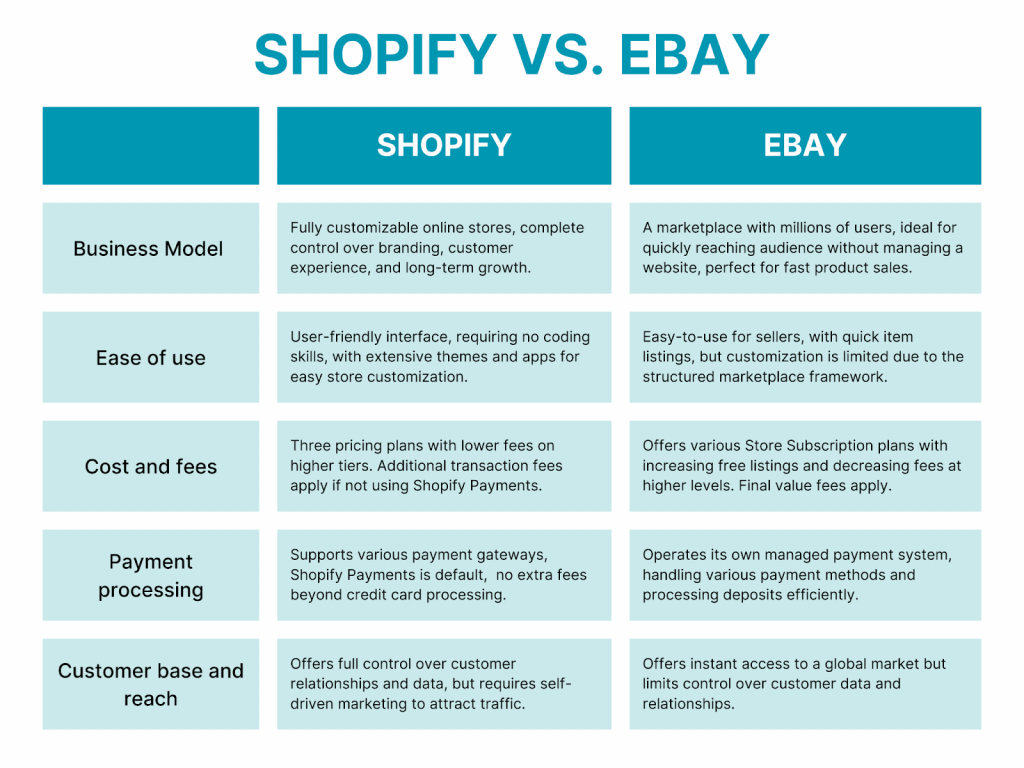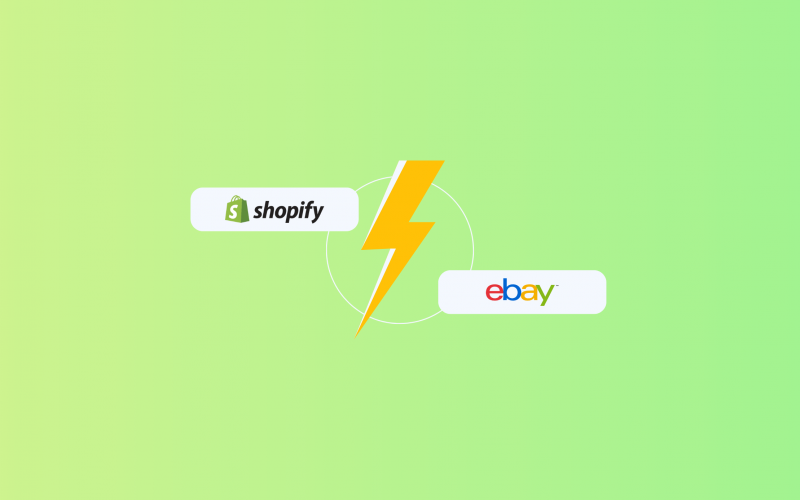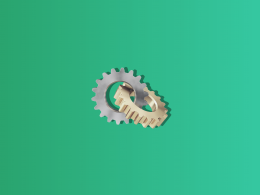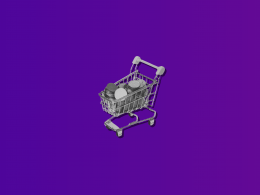Shopify store vs. eBay store —really, how is one to know which ecommerce business to go with? Although the platforms bring different strengths to the table, choosing which one is right depends on your business goals. Building a tailored brand or going into an existing marketplace isn’t a simple decision.
In this comparison, you’ll learn about the pros and cons of both Shopify and eBay so that you have every consideration in choosing what’s best for you. Let’s dive in and see which platform will drive your ecommerce success.
Key takeaways:
- With Shopify, you’re in control of the design and customer experience. With eBay, you get easy access to a huge established audience—without the hassle of managing a website.
- Running Shopify stores has more upfront costs, then tacks on the transaction fees unless using Shopify Payments, while managing eBay stores has fewer upfront costs but has insertion and final value fees that add up.
- While Shopify requires one to take a bit of an effort to drive traffic, It allows full control over customer data. In contrast, eBay provides access to a large market with minimal control over branding and customer relations.
Contents:
Major pros and cons of Shopify and eBay
Shopify is ideal for those looking to build a unique, branded online store with full control over design and customer experience. It offers robust Shopify SEO and marketing tools, extensive customization options, and high scalability, making it perfect for businesses planning to grow. However, it requires more effort in driving traffic and managing the entire ecommerce operation, and the costs can add up with monthly subscriptions and transaction fees.
eBay, on the other hand, provides immediate access to a broad, established audience, making it easier to start selling quickly without the need to build a website. It’s excellent for quickly moving products and tapping into a global customer base. However, eBay’s limited customization options and reliance on its marketplace structure make it harder to build a distinct brand. Additionally, the platform’s fees and lower scalability in terms of brand growth can be drawbacks for businesses looking for long-term expansion.
Shopify vs. eBay: 5 Key distinctions

1. Business model
Shopify
Shopify is a full-fledged ecommerce platform where you can create an online store that could be customized completely to your brand depending on what you sell on Shopify. It’s designed for businesses that want to build their brand, manage their website, and have full control over the customer experience.
eBay
eBay platform is a mature online marketplace where one places their product among other multiple sellers to target customers in really quick timing. eBay best suits either businesses or people who want to sell products without managing a website, or to those who want to move products quickly to a large, global audience.
2. Ease of use
Shopify
Shopify offers drag-and-drop functionality, making its interface really user-friendly while one builds and customizes their online store. No coding skills are needed; hence, it’s suitable even for people with basic computer knowledge. One can fully extend the core functionality of a storefront using various themes and Shopify apps available.
eBay
eBay is pretty user-friendly on the seller’s side. Listing an item takes only a few seconds: item details, setting a price, and photos. You’re led through the process, so it’s pretty easy to get started. The downside is that you’re limited by their parameters since you’re selling within someone else’s framework. Very little customization is allowed.
3. Cost and fees
Shopify
Shopify pricing includes 3 types of plans: Basic Shopify plan, for $39 a month; Shopify, for $105 a month; and Advanced, for $399 a month. Annual plans help reduce the fees accordingly. Credit-card processing fees start at 2.9% + 30 cents online and 2.6% + 10 cents in-person; the rates are lower on higher plans. Additional transaction fees apply if not using Shopify Payments, which ranges from 2% on Basic to 0.5% on Advanced.
eBay
eBay has several Store Subscription plans, including a low-cost Starter Store of $7.95/month ($4.95 annually), and a feature-rich Anchor Store. For the Starter Store, 250 listings per month are included. The more advanced levels, like Basic, Premium, or Anchor, will increase the number of free listings and lower insertion fees. Insertion fees range from 30 cents per listing for Starter to 5 cents for Anchor. Also, a final value fee of 0.5% to 15% of the sale amount is taken by eBay, plus 30 cents per order in some categories.
4. Payment processing
Shopify
Shopify hosts a plethora of payment gateways, which range from Shopify Payments (default) to third-party payment gateways like PayPal and Stripe, not to mention many others. There are no extra transaction fees if you use Shopify Payments, only credit card processing fees apply.
eBay
It has an independently operated managed payment system, which makes things very easy with respect to payment for sellers. The platform supports a number of payment methods, including credit/debit cards, PayPal, and Apple Pay. All payment processing is done by eBay itself and deposited into a seller’s bank account within a matter of days, normally.
5. Customer base and reach
Shopify
Shopify provides full control over ‘your’ customers, enables relating with them directly, and retaining their data. This is very critical to the long-term engagement and loyalty of customers. However, you need to drive traffic to your store through your own marketing efforts.
eBay
When using eBay, you can immediately target a large, global market. One major plus to the site is the ready-made audience that already exists without too much marketing effort. On the flip side, you don’t get as much control over customer data or have an opportunity to build long-lasting relationships.
How to manage Shopify and eBay sales?
While Shopify and eBay differ in many ways, integration with third-party apps like Synder in order to manage and grow an ecommerce business is easy with both.
Synder is a cutting-edge solution to automate accounting for your Shopify and eBay stores. This software automatically synchronizes all transactions from Shopify and eBay, as well as 30+ other online sales platforms and payment gateways, consolidates sales, fees, taxes, and refunds in real time, and ensures accurate financial records in accounting software without manual entry.
Be it building a brand on Shopify or selling on eBay’s large marketplace, this integration is there to help you manage sales, save time on bookkeeping, and simplify your financial management.
Wrapping up
So, is Shopify better than eBay? Well, it depends on what your goals are. If you’re looking to build a unique brand identity and have absolute control over your store, then Shopify is the way to go. But if you want to dive into a ready-made market and start selling straight away, then maybe eBay will be your best bet. Each of them has its strengths, so go for the one that aligns best with your business vision and growth plans. Remember, the right platform can make all the difference in ecommerce success.
Share your thoughts
Share your thoughts on this article and let us know which platform you’re more likely to use: Shopify or eBay? You might hold the answer for someone looking for the right choice!

.png)




